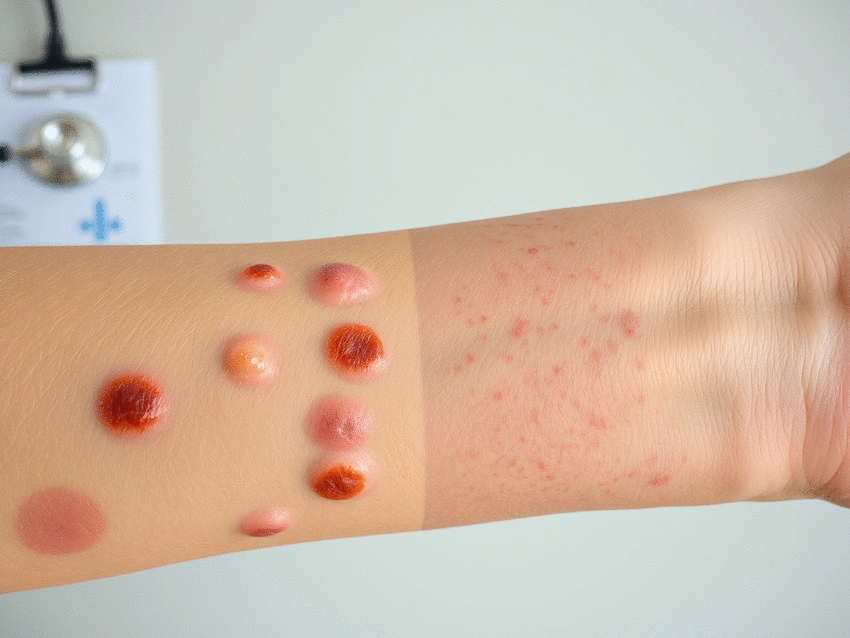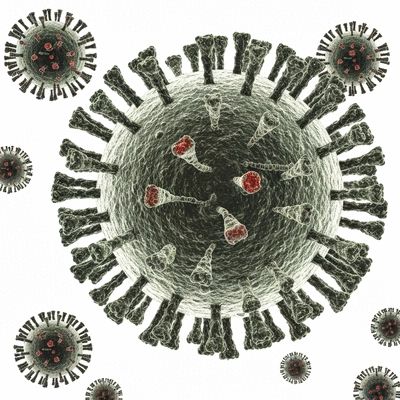Chickenpox: Initial Infection
- Occurs primarily in children.
- Widespread itchy rash (red spots & blisters).
- Symptoms: Fever, fatigue.
- Highly contagious.
The VZV causes chickenpox. After recovery, the virus remains dormant in nerve cells.
What if understanding chickenpox and shingles could empower you to take proactive steps for your health? These two conditions, while stemming from the same virus, have distinct characteristics that are crucial for proper management. Let's explore what you will learn about these common yet often misunderstood ailments.
Both chickenpox and shingles are caused by the Varicella-Zoster Virus (VZV), but they manifest differently. This visual provides a quick comparison of their characteristics and how the immune system plays a role in their development.
The VZV causes chickenpox. After recovery, the virus remains dormant in nerve cells.
VZV reactivates due to weakened immunity (age, stress, illness).
After chickenpox, the body develops immunity. However, a weakened immune system can trigger shingles.
Vaccination significantly reduces the risk of both conditions by boosting immunity.
When we talk about chickenpox and shingles, it's essential to grasp their connection and the role of the varicella-zoster virus. This virus is the culprit behind both conditions, and understanding its origins sets the stage for recognizing their unique characteristics. Many people might not realize that after recovering from chickenpox, the virus can lie dormant in the body, only to reactivate years later as shingles. Let's delve deeper!
The varicella-zoster virus (VZV) is a member of the herpesvirus family. This virus is responsible for both chickenpox and shingles. Initially, most people encounter chickenpox during childhood, which results in a highly contagious rash and flu-like symptoms. After recovery, the virus doesn’t just vanish; instead, it remains in your body, hidden within nerve cells. Isn't it fascinating that something so small can have such a lasting impact?
Understanding this connection is crucial, especially for those who may be experiencing symptoms of either condition. It sheds light on why maintaining skin health is important. As someone dedicated to empowering readers about skin issues, I find it vital to address these details right from the start!
While both chickenpox and shingles stem from the same virus, they manifest differently. Chickenpox typically presents as an itchy rash with red spots and blisters, while shingles often results in a painful, localized rash that can lead to long-lasting nerve pain. This distinction is important for proper diagnosis and treatment.
Recognizing these differences can help you distinguish between the two conditions, ensuring you seek the right treatment. It's always a good idea to have this information at hand, just in case someone you know experiences these symptoms. Early recognition can lead to better management!
Your immune system plays a pivotal role when it comes to the varicella-zoster virus. After an initial chickenpox infection, the body develops immunity. However, as we age or if our immune system weakens, the virus can reactivate, leading to shingles. This is why older adults are at a higher risk for developing shingles.
Understanding how our immune response works can empower us to make better health choices. At What Are Rashes, we believe in the importance of being informed, so you can take proactive steps towards your skin health!
Did you know? Staying hydrated is crucial for maintaining healthy skin, especially when dealing with conditions like chickenpox and shingles. Drinking plenty of water helps your skin heal faster and can minimize the severity of rashes. Additionally, consider incorporating foods rich in vitamins A, C, and E into your diet, as they promote skin health and recovery!
Both chickenpox and shingles are caused by the Varicella-Zoster Virus (VZV).
Chickenpox typically presents as a widespread itchy rash with red spots and blisters, primarily in children. Shingles, on the other hand, usually appears as a painful, localized rash in a stripe on one side of the body, often accompanied by burning sensations, and tends to affect older adults.
Yes, shingles can lead to postherpetic neuralgia (PHN), which is a condition causing long-lasting nerve pain even after the rash has healed.
Older adults, especially those aged 50 and above, are at higher risk for shingles due to natural declines in immune function. People with weakened immune systems from stress, illness, or medication are also more vulnerable.
Yes, vaccination is a key preventative measure for both conditions. It helps boost immunity and significantly reduces the risk of contracting either chickenpox or shingles.
As we wrap up our discussion on chickenpox and shingles, it's essential to highlight some key takeaways. Both conditions stem from the same virus, but they manifest in different ways and require distinct approaches to treatment and prevention. Understanding the symptoms can empower you to take proactive steps for your health!
Recognizing these differences is vital not only for personal health but also for understanding how to support others who may be affected. Remember, early intervention makes a significant difference!
In summary, being informed about the symptoms and treatment options available for chickenpox and shingles can lead to better health outcomes. If you notice any signs, whether it’s a youthful chickenpox rash or the distinctive pain of shingles, don't hesitate to reach out for help!
Moreover, prevention through vaccination remains the most effective strategy. This can significantly lower the incidence of both conditions, protecting not just yourself but also those around you!
Your skin health is paramount! If you have questions or concerns about chickenpox or shingles, I encourage you to speak with your healthcare provider. They can provide personalized advice based on your medical history and current health needs.
Don’t wait for symptoms to worsen before seeking guidance! A proactive approach can lead to more effective management and peace of mind.
For anyone seeking further information, there are plenty of resources available to help you navigate through chickenpox and shingles. Websites like the CDC and American Academy of Dermatology offer reliable and up-to-date information.
Utilizing these resources can help you make informed decisions about your skin health!
Finally, if you or someone in your family has been affected by chickenpox or shingles, consider joining support groups. These communities can provide valuable emotional support and practical advice based on shared experiences.
Connecting with others who understand what you're going through can be incredibly comforting. You’re not alone in your journey to understanding and managing these conditions!
Here is a quick recap of the important points discussed in the article:


